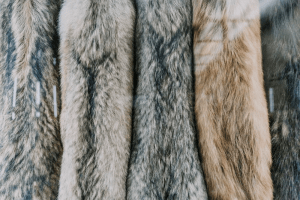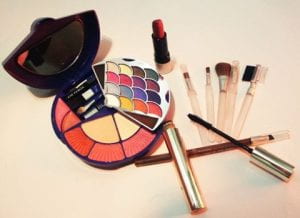Ecofeminism is a completely new concept to me, as I’m sure it is for many people. It took me some time to fully grasp the concept, as there are many different facets to this movement that can make it overwhelming to understand. While there is not a singular defined meaning of the term, Hopgood-Oster’s piece on ecofeminism defines it and its characteristics well. The reading states that ecofeminism “asserts that all forms of oppression are connected and that structures of oppression must be addressed in their totality.” In other words, any oppression against women, nature, or in regards to race, must be part of the conversation when discussing ecofeminism. Oppression against nature is at the core of this movement, as it is similarly structured to that of the oppression of women. They are both part of patriarchal structures that see the oppressed subject as providing something they need, and it being used to the oppressor’s advantage. For instance, early civilizations saw the earth as something that would provide certain provisions for them, and they took these things as they needed them. The same can be said for women, who are needed to bear children, and as the world progressed, they were consistently seen only in relation to other men, and not as their own persons. These parallels are what helped me better grasp the concept.
These patriarchal structures I mentioned are seen in what Hopgood-Oster refers to as “dualistic hierarchies”, such as the balances in “heaven/earth, male/female, human/animal”. It is the ongoing fight between any and all of these oppressive systems that must be deconstructed in order to reach equality in that relationship. Of these examples, the human/animal dichotomy intrigued me the most. The authors likened this to a master and slave relationship, a point which was reinforced by another author, Carol Adams. She “has made explicit links between androcentric, patriarchal treatment of other-than-human animals, particularly focusing on the meat producing industries of the United States, and the exploitation of women.” Not only do humans oppress animals and use them for meat, they are also widely used in fashion and beauty industries.
I chose to model this blog after a website that had a well-rounded view of how women lived their lives. Part of supporting feminism is knowing that we don’t have to fit into a box; we can have many different interests. Some women might think that buying into fashion and beauty can reinforce the stereotype that we are here to look good for others, as we don’t receive the same allowances that men do in regards to their looks. We can certainly enjoy each of these things for their own sake, but I was intrigued by the idea of women having interests and hobbies that may seem directly counterproductive. If we are to resist oppression of any kind in our fight for equality, can we still support an industry that shamelessly uses animals and their products to their advantage?

Many animals are killed each year in order to make fur coats, boots, purses, and other products. According to Alex Assoune of panaprium.com, this annual number is in the billions, worldwide. In the US, “around 159 million animals are slaughtered each year for the leather industry, which is four times more than in 1980”, a number he cites from the Food and Agriculture Organization website (Assoune). Many of these animals suffer in brutal conditions and are eventually executed in violent ways, according to PETA’s website. “Fur and leather items are often deliberately mislabeled” in “countries where animal welfare laws are virtually non-existent”, so it’s not necessarily always clear whether genuine animal products and skin are being used (peta.org).

Source: Wikipedia
Similarly, the cosmetics industry tests its products on animals, according the The Humane Society. Animals “have substances forced down their throats, dripped into their eyes or smeared onto their skin before they are killed” (humanesociety.org). Yet millions of women, many are likely feminists as well, are still using all of these products. I think this is a interesting example of perpetuating a system that we are trying to overturn. How can we be part of an oppressed system and still contribute to oppression in another form? In a counter-point to Carol Adams, a thought from Mary Stange’s books, Woman the Hunter and Gun Women address this very thought. She feels that “women are natural hunters, therefore in a predatory relationship with animals” and that “the woman-animal connection should be reevaluated.” This thought illustrates that we are aware we are supporting this imbalance, and need to become more aware of this so we can focus on change. The topic of ecofeminism and what it entails is quite vast, but it helps us view various types of oppression in a new light. Looking at things in this way can help us realize how much of a part we are playing in systems of oppression, and do what we can to create change.
Sources:
Assoune, Alex. “Leather, Wool, and Other Clothing Made from Animals.” PETA, 14 Dec. 2022, https://www.peta.org/issues/animals-used-for-clothing/.
“Ending Cosmetics Animal Testing.” The Humane Society of the United States, https://www.humanesociety.org/all-our-fights/ending-cosmetics-animal-testing#:~:text=Animals%20are%20still%20suffering%20and,end%20cosmetics%20testing%20on%20animals.

Hi Amanda, I am glad I am not the only one that was not familiar with ecofeminism before beginning this course but I am also very excited to continue learning. One thing that you pointed out in your blogpost that was really intriguing to me was when you pointed out the human/animal dichotomy associated with patriarchial structures that are used in defining ecofeminism. I can’t help but directly tie this to the male versus women dichotomy as well. Our political climate these days is really beginning to define women as “animalistic” in the way that bodily automony is hastily being stripped away. Ecofeminism asserting that all forms of oppression are interconnected really helped me understand the concept as well. Especially in your emphasis on the human/animal dichotomy – one personal experience this reminded me was this summer after the overturning of Roe v Wade I was protesting in Charleston with Planned Parenthood and a local abortion fund and of course there were counter protesters that were constantly referring to us as “animals”. Your emphasis on the human/animal dichotomy made that experience stick out in my mind because in that moment in time, and consistently since then, women who stand up for reproductive justice and the feminist movement are definitely in the “other than human” category.
I also appreciate your bringing up the beauty and fashion industry. While I love makeup and skin care etc, your post really made me think. Is the goal of the beauty and fashion industry to further push women and girls into the other than human category of society? Because we are constantly being pushed products, that are harmful to the environment and may not have been ethically resourced, in order to continue to strive to the beauty standard that the patriarchy and Hollywood sets. So that poses my question, is the motive to continue to cultivate the dichotomy of male/female or is it to eventually mold that comparison into male/animal?